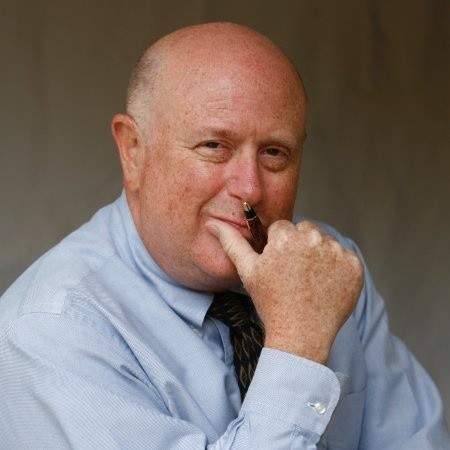
KPMG's recent research, tellingly entitled The Transformation of the Automotive Industry, observes that, “The global automotive industry is undergoing a fundamental transformation due to increasing consumer preferences toward vehicles with a lower carbon footprint.”
This growing consumer focus upon carbon emissions is now being reported from Beijing to the Jersey shore. China has seven of the top ten most polluted cities in the world because of their growing fleet of fossil fueled urban vehicles and their use of coal to generate 75 percent of their electricity. A reported dark joke among Beijing citizens is that the measure of a day’s air quality is whether you can see your feet when you step outside.
American consumers are increasingly linking weather volatility events like Hurricane Sandy to the higher air and ocean temperatures created by human emission of green house gases. Today, approximately 65 percent of citizens between the ages of 18 and 65 view climate changes as a serious or somewhat serious problem. In search of solutions, governments and consumers are looking at automobile manufacturers for answers.
Auto industry climate change strategy
The auto industry is pursuing the following three-part strategy for making price competitive, lower emissions cars and trucks:
Fuel Efficiency. Automobile manufacturers have linked fuel efficiency and tail pipe emissions as their climate change target metric. In response they are introducing at a record pace new cars and trucks that achieve reduced emissions through increased fuel efficiency.
Alternative Fuels. Automobile manufacturers are growing their product offerings that use natural gas, or biofuels like ethanol that can be blended with gasoline, to reduce the consumer’s pain at the pump while also emitting fewer tailpipe emissions.
Electrification. Electrification is the auto industry’s ultimate solution to tailpipe emissions. The auto industry has seen an explosion of new hybrid and plug-in hybrid car launches. Consumers are responding by buying cars equipped with electrification technologies at record rates for this market segment . The Prius is the top selling car in California. General Motors sold three times as many Chevrolet Volts in 2012 as it did in 2011, which was the car's first full year on the market.
But the sales volume for cars with electrification technologies are still only at a fraction of the size of the gasoline fueled car market. To grow sales, the auto industry is focused on a two-part strategy. The first part of their strategy is to grow consumer acceptance of electrification technologies and their benefits. They are doing so by integrating cost effective electrification technologies into gasoline fueled cars like auto start and stop engine technologies that turn off a gasoline engine at stop lights. The second part of their strategy is to make electrification cost competitive with gasoline and diesel technologies. This will be a maturation process as the car companies introduce consumers to electrification technologies while investing in research to advance next-generation electrification technologies that hold the promise of being price and performance attractive to the mass market of consumers.
Ford’s electrification car technology
Ford is now emerging as an auto industry leader in car electrification. Over the last 12 months, they have introduced a range of hybrid, plug-in hybrid and all-electric cars. In the following 2-minute video, Julie D’Annunzlo, Ford’s Global Electric Fleet Manager, outlines how electrification technologies will soon be delivering 3-10 percent fuel economy gains for many new Ford gasoline cars and how Ford car buyers are now being offered electrification technologies that will save money and reduce emissions by delivering 40 to 100 mile per gallon fuel efficiency.
https://www.youtube.com/watch?v=e4LwoY7cAdI
This is the third article of a four-part case study on how Ford is going green. Their best practices can be used by every business to grow revenues and win customers. The first article in this article series profiled Chairman Of The Board Bill Ford and CEO Alan Mulally on Ford’s CSR vision and how it is driving sales. The second article profiled Ford’s Go Further brand messaging tied to sustainability. The final article will be a test drive of the Ford plug-in electric C-MAX Energi and how digital technologies are re-engineering cars to be fun to drive, cost less to operate and mean more in terms of reduced tailpipe emissions.
Travel and accommodations to NAIAS in Detroit were covered by Ford. Opinions are my own.
Bill Roth is an economist and the Founder of Earth 2017 He coaches business owners and leaders on proven best practices in pricing, marketing and operations that make money and create a positive difference. His book, The Secret Green Sauce, profiles business case studies of pioneering best practices that are proven to win customers and grow product revenues. Follow him on Twitter: @earth2017.

Bill Roth is a cleantech business pioneer having led teams that developed the first hydrogen fueled Prius and a utility scale, non-thermal solar power plant. Using his CEO and senior officer experiences, Roth has coached hundreds of CEOs and business owners on how to develop and implement projects that win customers and cut costs while reducing environmental impacts. As a professional economist, Roth has written numerous books including his best selling The Secret Green Sauce (available on Amazon) that profiles proven sustainable best practices in pricing, marketing and operations. His most recent book, The Boomer Generation Diet (available on Amazon) profiles his humorous personal story on how he used sustainable best practices to lose 40 pounds and still enjoy Happy Hour!














